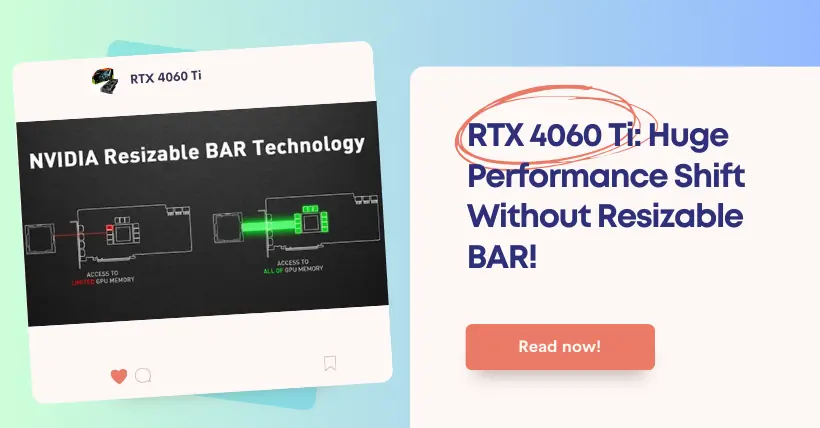Last year, the editor shared a comparison for the readers, contrasting the performance differences of the GeForce RTX 4060 Ti graphics card operating in PCIe3.0 and PCIe4.0 modes. Today, the editor continues to share a comparison of another feature, Resizable BAR, to see how much difference it makes in performance when the GeForce RTX 4060 Ti enables or disables the Resizable BAR feature.
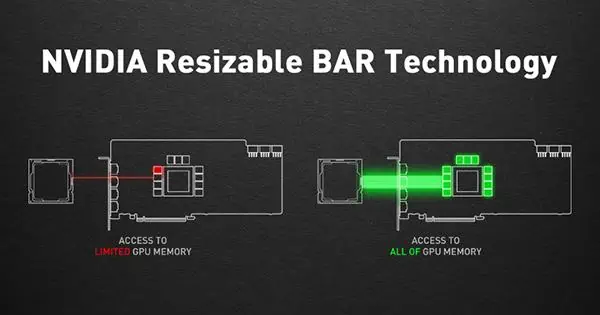
First, let’s briefly review this technology:
Resizable BAR is a GPU acceleration technology that allows the CPU to access the entire system memory (similar to AMD’s SAM direct memory access technology). The graphics card can also directly access all memory storage areas in the computer system, thereby shortening the time to transfer data between memory and VRAM, reducing the communication delay between the GPU and CPU, and improving performance.
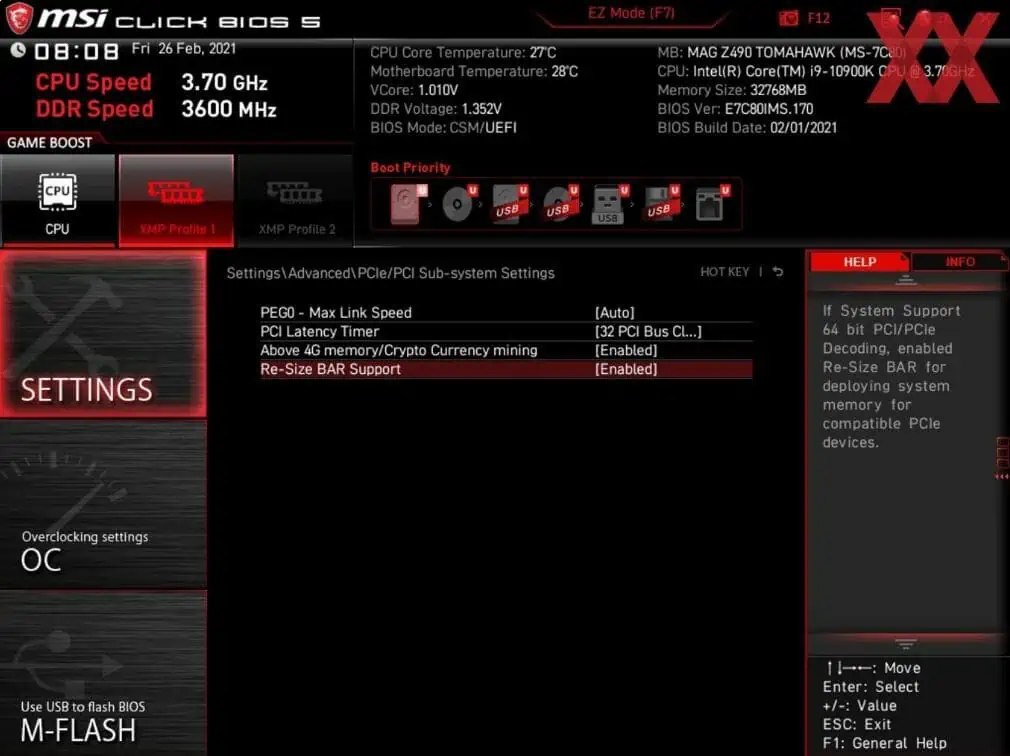
This technology was initially equipped in the RTX 30 series graphics cards, and according to Nvidia, enabling this feature can achieve up to a 10% performance improvement. It has been several years since this technology was introduced, and the RTX 40 series graphics cards have been released, so the necessary optimizations should have been made. Now is an appropriate time to test whether this technology is just a fancy trick, a gimmick, and to compare its current prevalence.
Before diving into the topic, it’s important to emphasize one point:
Enabling the Resizable BAR feature has a relatively high threshold; it requires ensuring that the motherboard, BIOS, and graphics card all support it, and the settings are somewhat complex (refer to figures two and three). Additionally, some essential accompanying software must be installed. Of course, the game itself must also support this feature, and not all games currently support it. If a game doesn’t support it, then there isn’t much difference in performance whether it’s enabled or not.
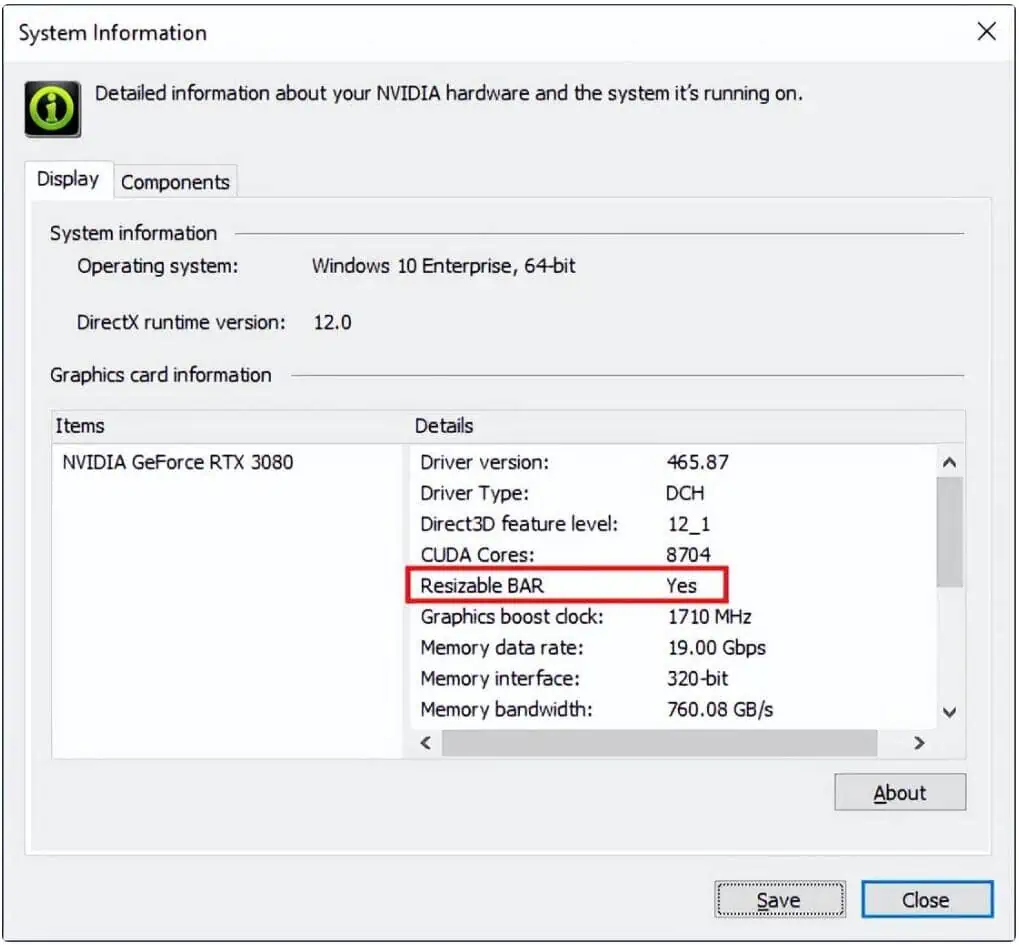
01
Specification Introduction of RTX 4060 Ti
The GeForce RTX 4060 Ti was released on May 18, 2023, featuring the AD106 GPU based on the Ada Lovelace architecture. It is manufactured using TSMC’s 5nm process and boasts 4352 CUDA cores, 128 texture units, 48 raster units, 34 multi-unit stream processors, 128 tensor cores, and 34 ray tracing cores. It has an L2 cache of 32 MB.
The standard operating frequency is 2310 MHz, with a maximum frequency of 2535 MHz. It is equipped with 8GB of GDDR6 VRAM, with a memory speed of 18 Gbps, a memory bus width of 128 bits, and a memory bandwidth of 288.0 GB/s. Its FP32 performance is 22.06 TFLOPS, its power consumption is 160W, and the suggested retail price is $399.
02
Test Platform Configuration
The main hardware configuration is as follows:
The processor is an AMD Ryzen 7 5800X3D, the motherboard is an ASUS TUF GAMING B550 PLUS, the memory is Corsair Vengeance RGB PRO 16GB DDR4 3600MHz, the storage consists of a Kingston A400 SSD 120GB SATA and a Western Digital Barracuda 2TB mechanical hard drive, and the operating system is Windows 10 Pro 21H2 64-bit.
03
Gaming Benchmarks
The following tests ten games, all using 1080P quality mode. The series of images below show the performance with the Resizable Bar feature turned off on the left and turned on on the right, without enabling DLSS.
The first game is “Hitman 3”.
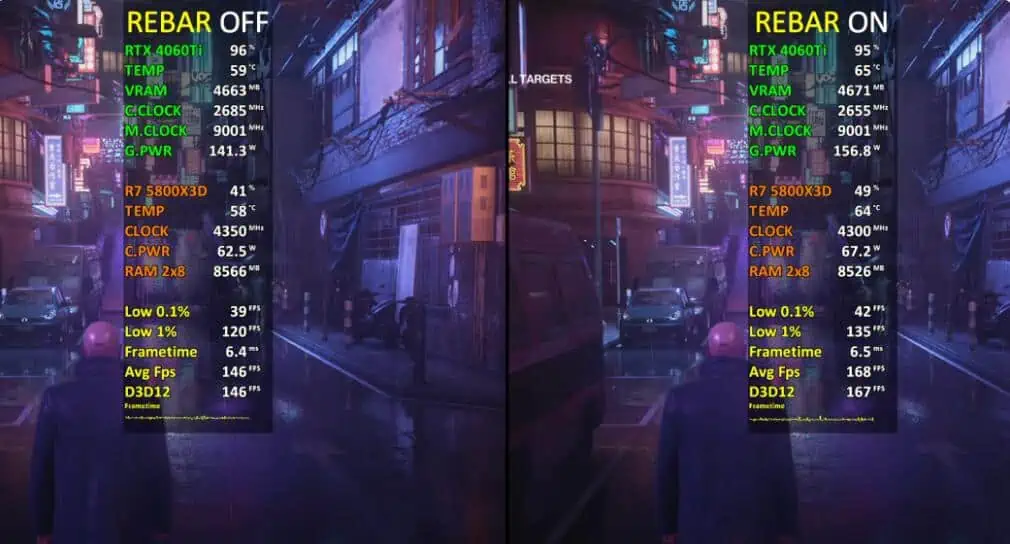
With Resizable Bar turned off
- Average Frame Rate: 146 FPS
- Minimum Instantaneous Frame Rate: 120 FPS
- Frame Time: 6.4ms
- CPU Usage: 41%
- Power Consumption: 62.5W
- CPU Temperature: 58 degrees
- Memory Usage: 8.6GB
- GPU Usage: 96%
- VRAM Usage: 4.7GB
- Power Consumption: 141W
- GPU Temperature: 59 degrees
With Resizable Bar turned on
- Average Frame Rate: 168 FPS
- Minimum Instantaneous Frame Rate: 135 FPS
- Frame Time: 6.5ms
- CPU Usage: 49%
- Power Consumption: 67.2W
- CPU Temperature: 64 degrees
- Memory Usage: 8.5GB
- GPU Usage: 95%
- VRAM Usage: 4.7GB
- Power Consumption: 157W
- GPU Temperature: 65 degrees
In this game, enabling Resizable Bar increases CPU usage by 8% and improves the average frame rate by 22 FPS, a 15% lead.
The second game is “Forza Horizon 5”.
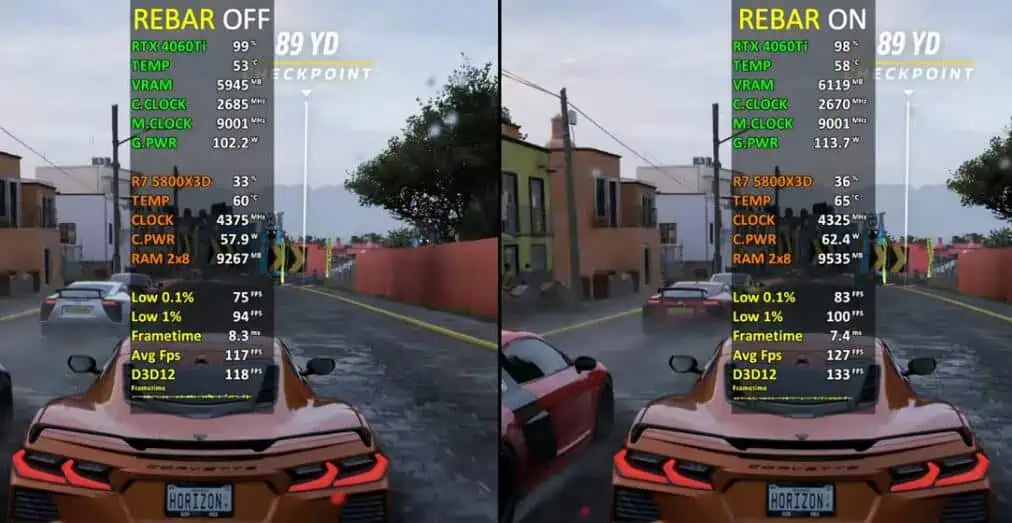
With Resizable Bar turned off
- Average Frame Rate: 117 FPS
- Minimum Instantaneous Frame Rate: 94 FPS
- Frame Time: 8.3ms
- CPU Usage: 33%
- Power Consumption: 57.9W
- CPU Temperature: 60 degrees
- Memory Usage: 9.3GB
- GPU Usage: 99%
- VRAM Usage: 5.9GB
- Power Consumption: 102W
- GPU Temperature: 53 degrees
With Resizable Bar turned on
- Average Frame Rate: 127 FPS
- Minimum Instantaneous Frame Rate: 100 FPS
- Frame Time: 7.4ms
- CPU Usage: 36%
- Power Consumption: 62.4W
- CPU Temperature: 65 degrees
- Memory Usage: 9.5GB
- GPU Usage: 98%
- VRAM Usage: 6.1GB
- Power Consumption: 114W
- GPU Temperature: 58 degrees
In this game, enabling Resizable Bar results in a 9% lead in average frame rate with a minor increase in CPU usage and memory consumption.
The third game is “Assassin’s Creed Valhalla”.
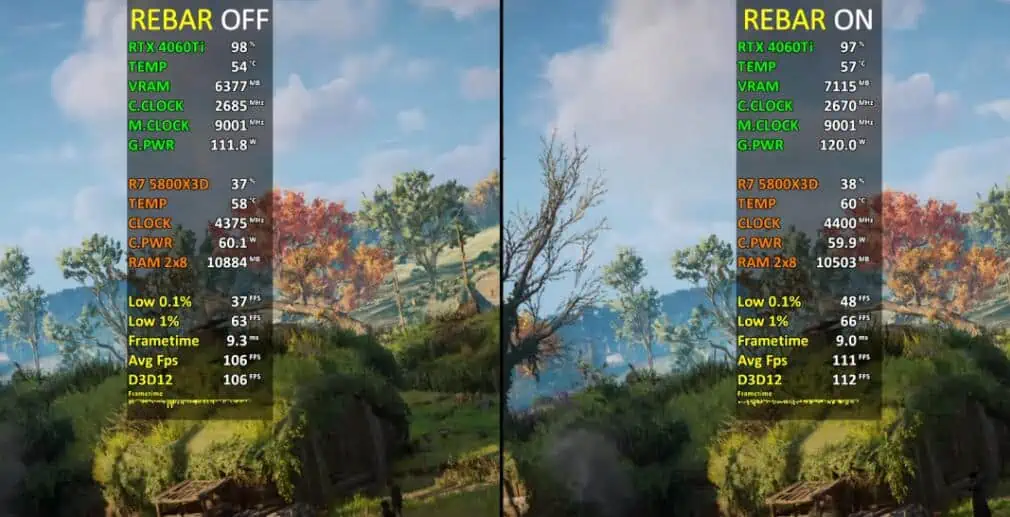
With Resizable Bar turned off
- Average Frame Rate: 106 FPS
- Minimum Instantaneous Frame Rate: 63 FPS
- Frame Time: 9.3ms
- CPU Usage: 37%
- Power Consumption: 60.1W
- CPU Temperature: 58 degrees
- Memory Usage: 10.9GB
- GPU Usage: 98%
- VRAM Usage: 6.4GB
- Power Consumption: 112W
- GPU Temperature: 54 degrees
With Resizable Bar turned on
- Average Frame Rate: 111 FPS
- Minimum Instantaneous Frame Rate: 66 FPS
- Frame Time: 9.0ms
- CPU Usage: 38%
- Power Consumption: 59.9W
- CPU Temperature: 60 degrees
- Memory Usage: 10.5GB
- GPU Usage: 97%
- VRAM Usage: 7.1GB
- Power Consumption: 120W
- GPU Temperature: 57 degrees
In this game, the performance improvement with Resizable Bar enabled is marginal.
The fourth game is “Hogwarts Legacy”.
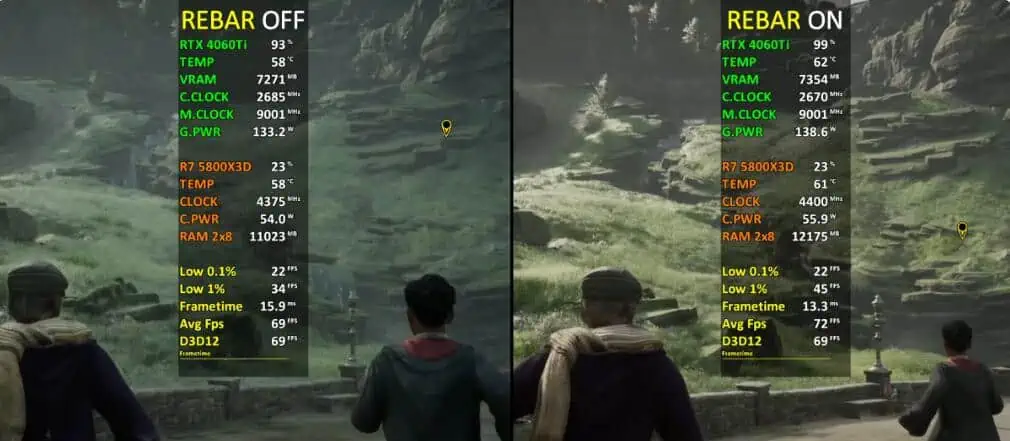
With Resizable Bar turned off
- Average Frame Rate: 69 FPS
- Minimum Instantaneous Frame Rate: 34 FPS
- Frame Time: 15.9ms
- CPU Usage: 23%
- Power Consumption: 54.0W
- CPU Temperature: 58 degrees
- Memory Usage: 11.0GB
- GPU Usage: 93%
- VRAM Usage: 7.3GB
- Power Consumption: 133W
- GPU Temperature: 58 degrees
With Resizable Bar turned on
- Average Frame Rate: 72 FPS
- Minimum Instantaneous Frame Rate: 45 FPS
- Frame Time: 13.3ms
- CPU Usage: 23%
- Power Consumption: 55.9W
- CPU Temperature: 61 degrees
- Memory Usage: 12.2GB
- GPU Usage: 99%
- VRAM Usage: 7.4GB
- Power Consumption: 139W
- GPU Temperature: 62 degrees
This game shows a slight improvement in frame rate and frame time with the Resizable Bar enabled.
The fifth game is “A Plague Tale: Requiem”.
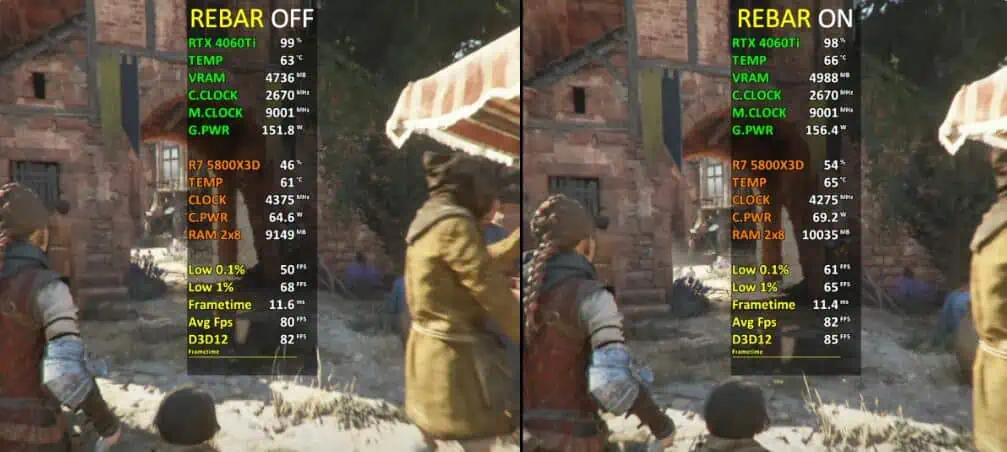
With Resizable Bar turned off
- Average Frame Rate: 80 FPS
- Minimum Instantaneous Frame Rate: 68 FPS
- Frame Time: 11.6ms
- CPU Usage: 46%
- Power Consumption: 64.6W
- CPU Temperature: 61 degrees
- Memory Usage: 9.1GB
- GPU Usage: 99%
- VRAM Usage: 4.7GB
- Power Consumption: 152W
- GPU Temperature: 63 degrees
With Resizable Bar turned on
- Average Frame Rate: 82 FPS
- Minimum Instantaneous Frame Rate: 65 FPS
- Frame Time: 11.4ms
- CPU Usage: 54%
- Power Consumption: 69.2W
- CPU Temperature: 65 degrees
- Memory Usage: 10.0GB
- GPU Usage: 98%
- VRAM Usage: 5.0GB
- Power Consumption: 156W
- GPU Temperature: 66 degrees
In this game, the performance gain with Resizable Bar enabled is negligible, showing only a minor improvement in frame rate.
The sixth game is “Resident Evil 4 Remake”.
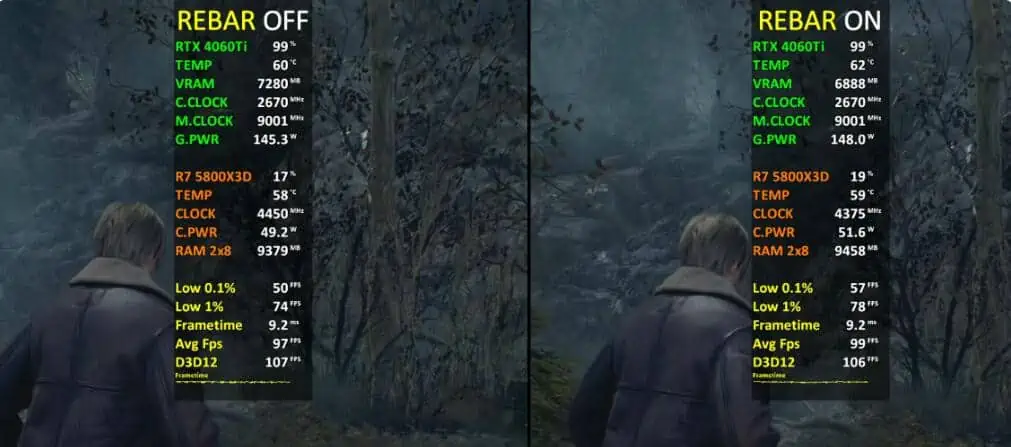
With Resizable Bar turned off
- Average Frame Rate: 97 FPS
- Minimum Instantaneous Frame Rate: 74 FPS
- Frame Time: 9.2ms
- CPU Usage: 17%
- Power Consumption: 49.2W
- CPU Temperature: 58 degrees
- Memory Usage: 9.4GB
- GPU Usage: 99%
- VRAM Usage: 7.3GB
- Power Consumption: 145W
- GPU Temperature: 60 degrees
With Resizable Bar turned on
- Average Frame Rate: 99 FPS
- Minimum Instantaneous Frame Rate: 78 FPS
- Frame Time: 9.2ms
- CPU Usage: 19%
- Power Consumption: 51.6W
- CPU Temperature: 59 degrees
- Memory Usage: 9.5GB
- GPU Usage: 99%
- VRAM Usage: 6.9GB
- Power Consumption: 148W
- GPU Temperature: 62 degrees
The performance increase is minimal in this game as well, with a slight increase in the average frame rate when Resizable Bar is enabled.
The seventh game is “Watch Dogs: Legion”.
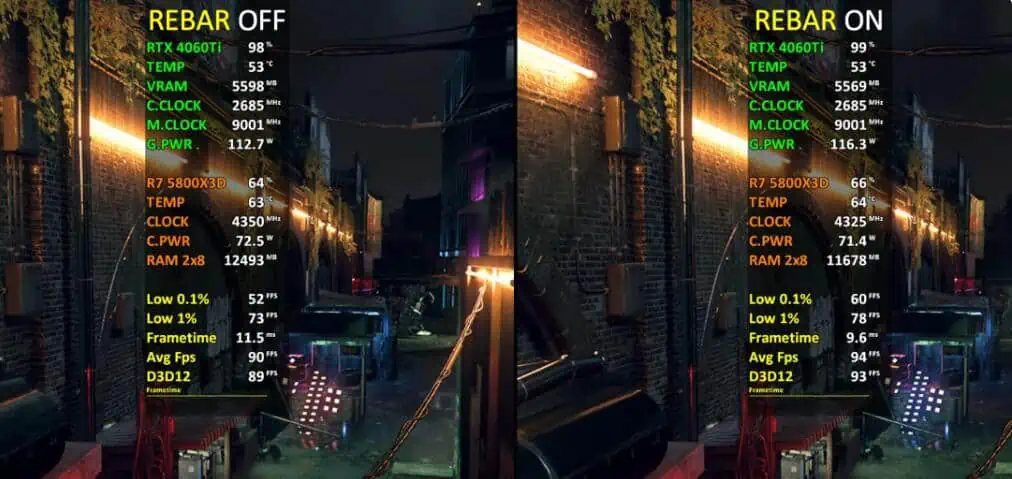
With Resizable Bar turned off
- Average Frame Rate: 90 FPS
- Minimum Instantaneous Frame Rate: 73 FPS
- Frame Time: 11.5ms
- CPU Usage: 64%
- Power Consumption: 72.5W
- CPU Temperature: 63 degrees
- Memory Usage: 12.5GB
- GPU Usage: 98%
- VRAM Usage: 5.6GB
- Power Consumption: 113W
- GPU Temperature: 53 degrees
With Resizable Bar turned on
- Average Frame Rate: 94 FPS
- Minimum Instantaneous Frame Rate: 78 FPS
- Frame Time: 9.6ms
- CPU Usage: 66%
- Power Consumption: 71.4W
- CPU Temperature: 64 degrees
- Memory Usage: 11.7GB
- GPU Usage: 99%
- VRAM Usage: 5.6GB
- Power Consumption: 116W
- GPU Temperature: 53 degrees
In “Watch Dogs: Legion,” there’s a modest performance improvement with Resizable Bar enabled, particularly noted in the slightly higher average frame rate and lower frame time.
The eighth game is “Horizon Zero Dawn”.
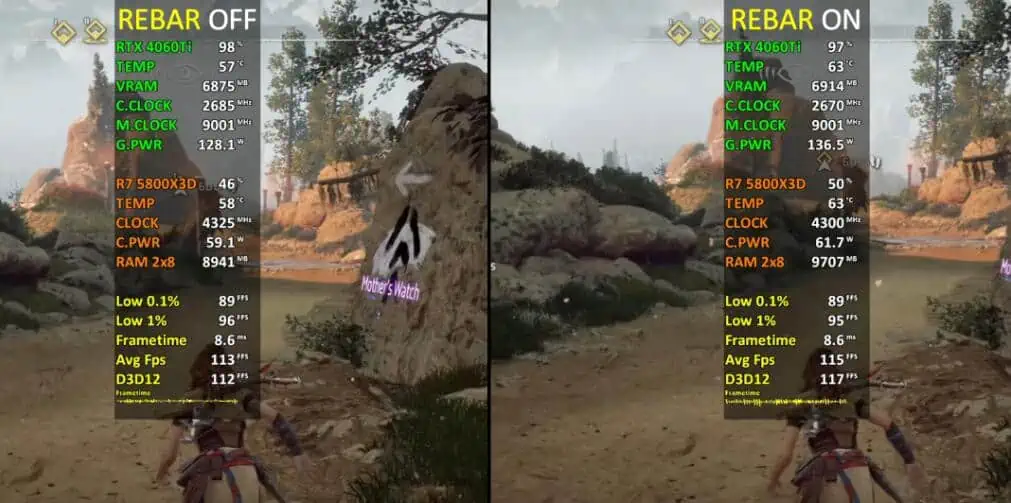
With Resizable Bar turned off
- Average Frame Rate: 113 FPS
- Minimum Instantaneous Frame Rate: 96 FPS
- Frame Time: 8.6ms
- CPU Usage: 46%
- Power Consumption: 59.1W
- CPU Temperature: 58 degrees
- Memory Usage: 8.9GB
- GPU Usage: 98%
- VRAM Usage: 6.9GB
- Power Consumption: 128W
- GPU Temperature: 57 degrees
With Resizable Bar turned on
- Average Frame Rate: 115 FPS
- Minimum Instantaneous Frame Rate: 95 FPS
- Frame Time: 8.6ms
- CPU Usage: 50%
- Power Consumption: 61.7W
- CPU Temperature: 63 degrees
- Memory Usage: 9.7GB
- GPU Usage: 97%
- VRAM Usage: 6.9GB
- Power Consumption: 137W
- GPU Temperature: 63 degrees
“Horizon Zero Dawn” shows a very slight improvement with Resizable Bar enabled, indicating minimal performance gains.
The ninth game is “The Last of Us Part I”.
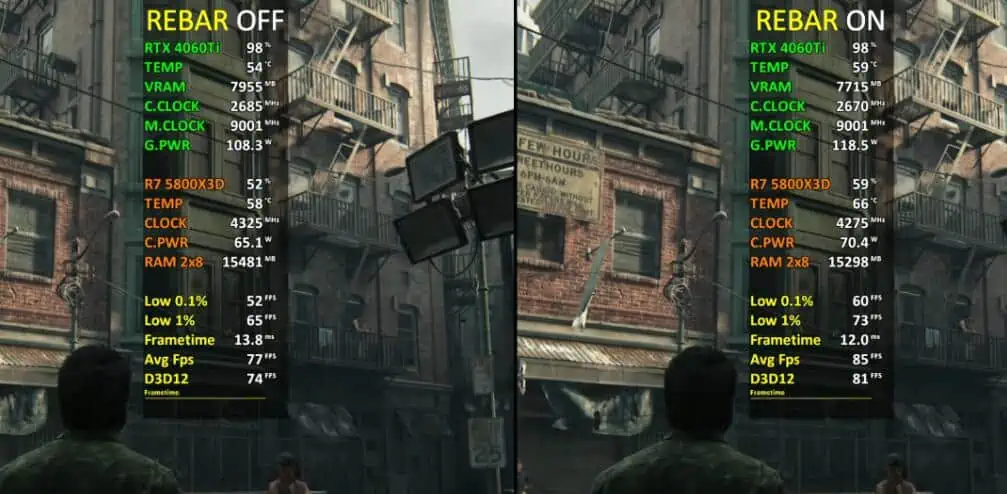
With Resizable Bar turned off
- Average Frame Rate: 77 FPS
- Minimum Instantaneous Frame Rate: 55 FPS
- Frame Time: 13.8ms
- CPU Usage: 52%
- Power Consumption: 65.1W
- CPU Temperature: 58 degrees
- Memory Usage: 15.5GB
- GPU Usage: 98%
- VRAM Usage: 8.0GB
- Power Consumption: 108W
- GPU Temperature: 54 degrees
With Resizable Bar turned on
- Average Frame Rate: 85 FPS
- Minimum Instantaneous Frame Rate: 73 FPS
- Frame Time: 12.0ms
- CPU Usage: 59%
- Power Consumption: 70.4W
- CPU Temperature: 66 degrees
- Memory Usage: 15.3GB
- GPU Usage: 98%
- VRAM Usage: 7.7GB
- Power Consumption: 119W
- GPU Temperature: 59 degrees
In “The Last of Us Part I,” there’s a noticeable improvement in both frame rate and frame time when Resizable Bar is enabled.
The tenth game is “Red Dead Redemption 2”.

With Resizable Bar turned off
- Average Frame Rate: 93 FPS
- Minimum Instantaneous Frame Rate: 75 FPS
- Frame Time: 11.5ms
- CPU Usage: 34%
- Power Consumption: 57.5W
- CPU Temperature: 64 degrees
- Memory Usage: 10.7GB
- GPU Usage: 97%
- VRAM Usage: 5.4GB
- Power Consumption: 139W
- GPU Temperature: 62 degrees
With Resizable Bar turned on
- Average Frame Rate: 93 FPS
- Minimum Instantaneous Frame Rate: 75 FPS
- Frame Time: 12.2ms
- CPU Usage: 46%
- Power Consumption: 65.4W
- CPU Temperature: 65 degrees
- Memory Usage: 11.8GB
- GPU Usage: 97%
- VRAM Usage: 5.5GB
- Power Consumption: 137W
- GPU Temperature: 60 degrees
“Red Dead Redemption 2” shows no improvement in frame rate with the Resizable Bar enabled, indicating that the performance gains are highly variable and depend on the specific game and its optimization for this feature.
04
Comparative Conclusion
Overall, the testing results are somewhat disappointing. After enabling the Resizable Bar feature, only a few games showed noticeable performance improvements. In most games, there was no significant enhancement, but this doesn’t mean the technology is merely a gimmick. This indicates that the technology is still far from widespread adoption and optimization.
On the other hand, after enabling the Resizable Bar, the power consumption of both CPU and GPU was notably higher, suggesting that more computing power is being utilized. This is a fundamental basis for enhancing performance. However, to convert this advantage into actual gaming performance improvements, there’s significant work to be done in optimization by Nvidia, hardware manufacturers, and game developers. The journey towards fully harnessing the benefits of Resizable Bar technology appears to be long and demanding.

Related:

